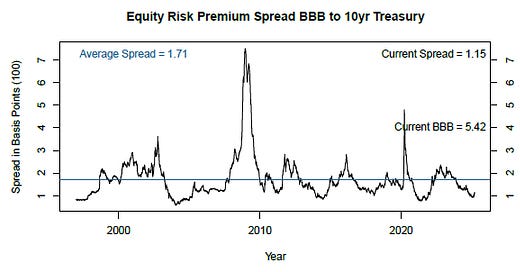The equity risk premium is the excess return investors expect to receive for taking on the higher risk of investing in stocks compared to risk-free investments like government bonds. It's a fundamental concept in finance and investing that helps investors make informed decisions about asset allocation and expected returns.
What is the Equity Risk Premium?
The equity risk premium (ERP) is calculated as:
Equity Risk Premium = Expected Return on Stocks - Risk-Free Rate
For example, if stocks are expected to return 10% annually and the risk-free rate (typically measured by short-term government bonds) is 3%, then the equity risk premium is 7%.
The ERP is typically considered the long run risk premium.
How Investors Use the Equity Risk Premium
The equity risk premium serves as:
A decision-making tool for asset allocation: Higher ERPs generally suggest stocks are more attractive relative to bonds.
A valuation metric: When the ERP is higher than historical averages, stocks might be considered undervalued; when lower, potentially overvalued.
A way to set return expectations: Investors can use it to establish realistic expectations about future stock returns.
Input for financial models: The ERP is a critical component in models like the Capital Asset Pricing Model (CAPM) and discounted cash flow (DCF) analyses.
Calculating Equity Risk Premium: Approaches and Challenges
There are multiple methodologies for calculating the equity risk premium, each with its own strengths and limitations:



